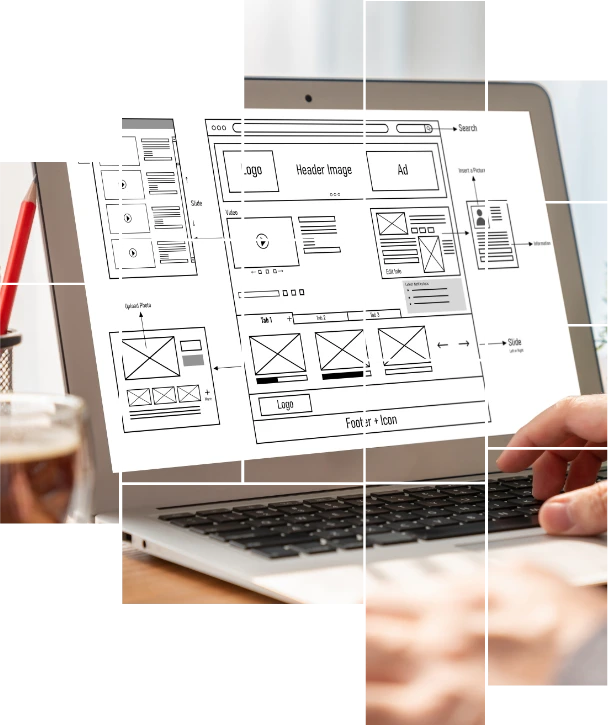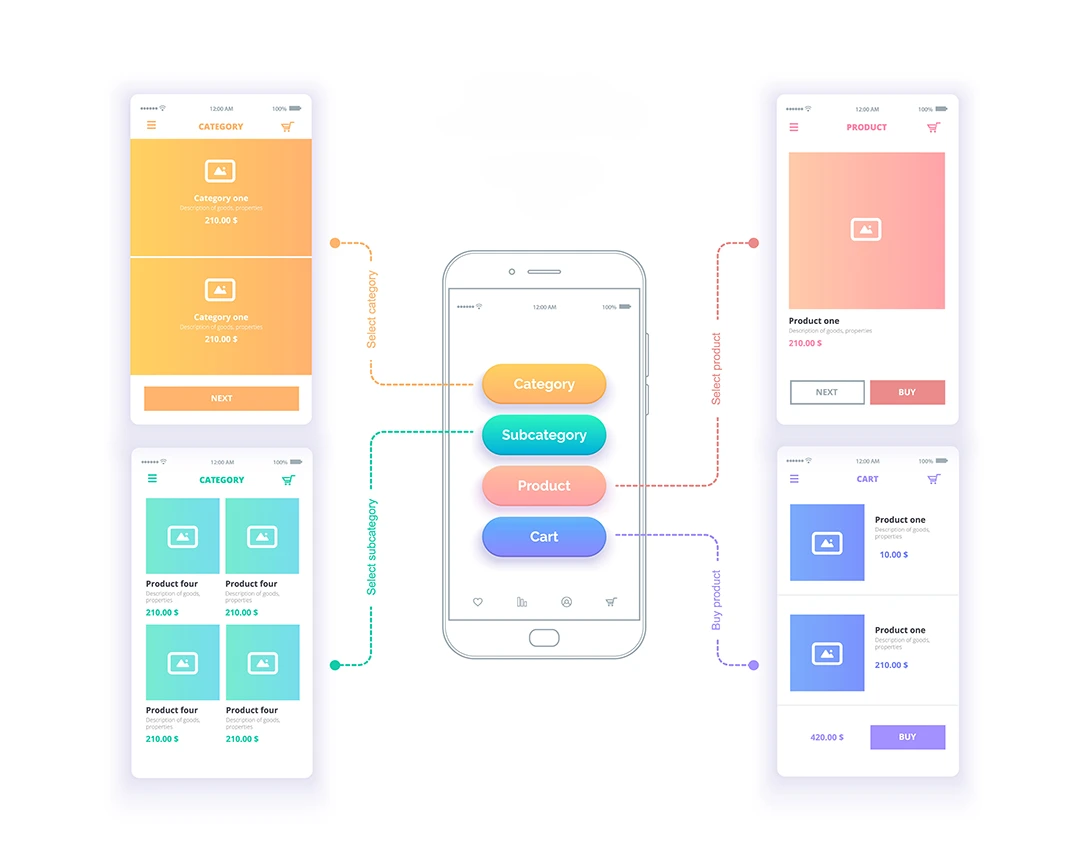
UX & UI Development

UX & UI Development

What is a functional digital strategy? UX & UI development.
What is a functional digital strategy? UX & UI development.
A functional digital strategy attracts and retains customers through multiple digital channels, such as websites, apps, online platforms and more. User Experience (UX) and User Interface (UI) design and development are critical to optimizing the function of these digital assets and maximizing their return on your investments.
The success of your website (and your business) depends on UX UI optimization. Optimized UX UI design makes it more intuitive and visually compelling. When users find your site easy to navigate and interact with, they are far more likely to stay longer, explore more, engage with your brand and convert. UX UI Optimization drives bottom line growth. We bring UX and UI together in perfect harmony, creating a seamless, engaging and enjoyable experience that converts visitors into satisfied, loyal customers and increases sales. We create UX UI design that drives the success of your website and your business.
UX UI Optimization Drives Engagement
Any functional digital strategy must drive conversions, whether it’s making a purchase, signing up for a newsletter, sharing content or contacting you. Our UX UI design creates direct pathways that lead users exactly where you want them to go.
We make sure that call-to-action buttons, forms and other interactive elements are strategically placed and visually compelling. We streamline the customer journey to remove any obstacles that might prevent them from getting the information they need and moving the journey forward.
UX UI Optimization Drives Authority & Trust
Your website has two audiences. Your consumer, client, or customer, and search engine web crawlers. They need designed and developed with both audiences in mind. This is where UX UI design comes into play - to maximize the value of that website the user journey of both crawlers and humans should build trust and credibility. This is executed in numerous ways building different trust signals, linking patterns, keyword use and user engagement/conversion strategy.
The UX UI optimization strategies employed, allow those web crawlers to digest and understand what the human user interacts with and is being shown to engage with on-site. In time, this builds authority and trust with the search crawlers who in-turn drive higher domain authority to your website. This creates a trickle-down impact to your entire digital footprint in a very positive manner, lastly impacting your bottom line. Your website should and can function as a laundromat or a car wash (make you money while you sleep). However, there’s a plethora of design development tactics that must be deployed, tested, optimized and placed for that success to take place.
UX UI Optimization Drives Conversion
Our UX UI design services include usability testing, heatmapping, A/B testing and other techniques that allow you to collect meaningful data on user behaviors and preferences. We turn these insights into continuous improvements, such as adjusting button colors or redesigning layouts, that constantly optimize engagement and conversion. This level of UX UI optimization is tied to CRO (Conversion Rate Optimization) campaigns and is in-depth digital marketing technique.
Effective UX UI design and development are an integral part of your functional digital strategy. Our UX UI optimization services help make sure all digital interactions and experiences attract and engage users, and convert them into customers. We keep your strategy focused, adaptable, measurable and on the cutting edge of digital innovation.
FAQ
FAQ
What exactly is UX UI design
User Experience and User Interface design (UX UI) are umbrella terms that represent the entire process of creating digital landscape products and services that provide intuitive, fluid, and delightful experiences to their users.
People widely use terms like “UX/UI Design” or “Usability Design” to represent User Experience Design. However, UI (User Interface) Design and Usability Design are subsets of UX Design.
Within websites and apps, user experience (UX) and (UI) elements present user “touches” across their experience. Simply put, UX UI design focuses on leveraging best practices to optimize all those touchpoints for your benefit. It is the effort to design efficient and engaging user flow, regardless of what your business is.
What is the timeline for UX UI Optimization or design?
The elements that influence the cost (scope, complexity, platforms, budget, client feedback) will also affect the overall timeline of a UX UI design project. Some smaller UX optimization projects could be 2-3 months to 6 months. Larger projects could take more than 6 months to 1 year depending on the scope and complexity of the work.
Pro tip: If you’re building a new website or app ask us to include it in the pricing, and get it handled out the gate. Just like SEO work, it is 10x more valuable to start out with proper UX UI design factors in place and later optimize based off actionable findings than go back and integrate proper UX UI design later.
How can good UX UI design help a business?
Due to the fact UX UI design and UX UI optimization directly improves your bottom line, it is just as crucial as branding, marketing and sales for any business that delivers products and or services digitally via their website or app environments.
This includes brick and mortar local locations that integrate into user behavior and sales digitally. A perfect example of this the restaurant industry, go deeper, pizza chains, grocery chains, etc. The interactions, engagements, buttons, step by step, and overall order processes and user-flows are all part of UX UI design features that take the user to your destination easily and fast.
It’s a common stat within the UX world that for dollar invested, a business will see a $100 ROI. (of course this is an industry avg.) That’s a 9900% return on investment. This staggering number is due to how UX UI design and UX UI optimization impacts conversion rates, customer acquisition cost, support costs, customer retention, trust signals and market share.




